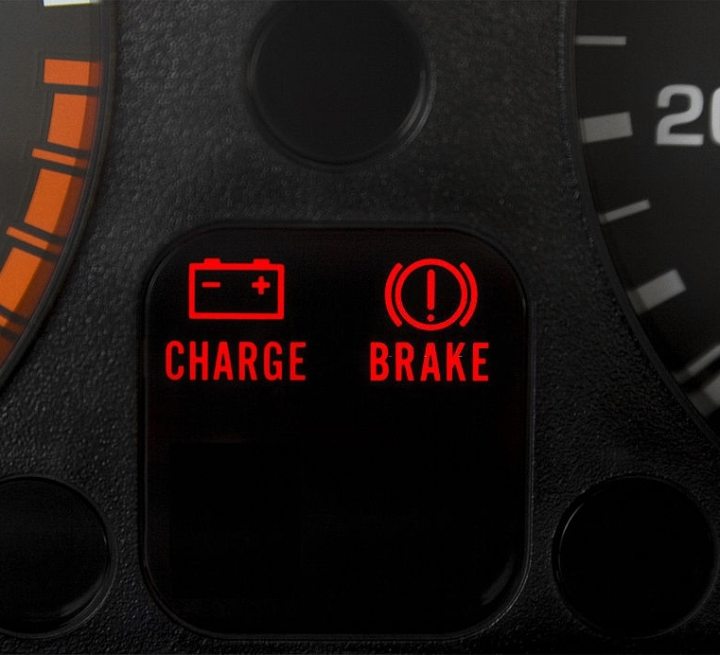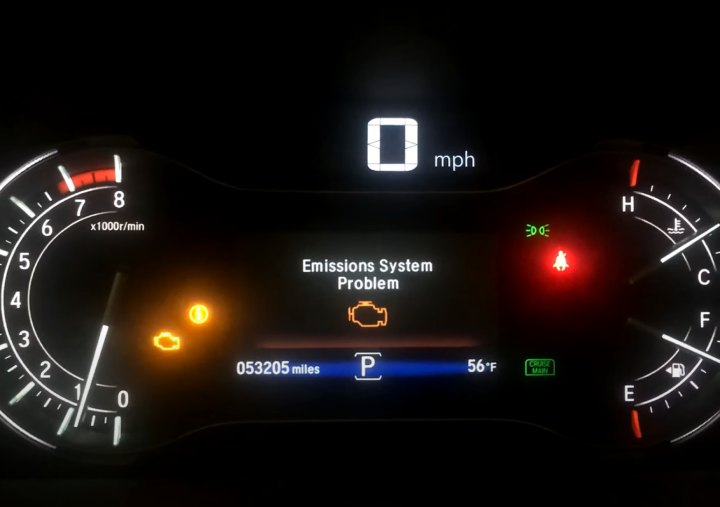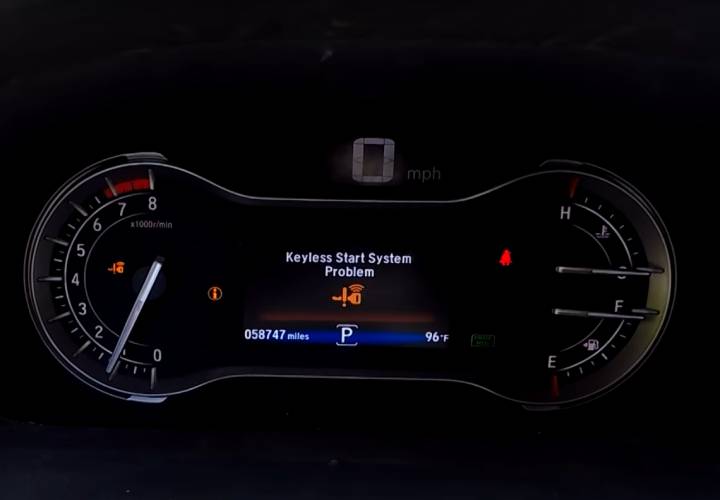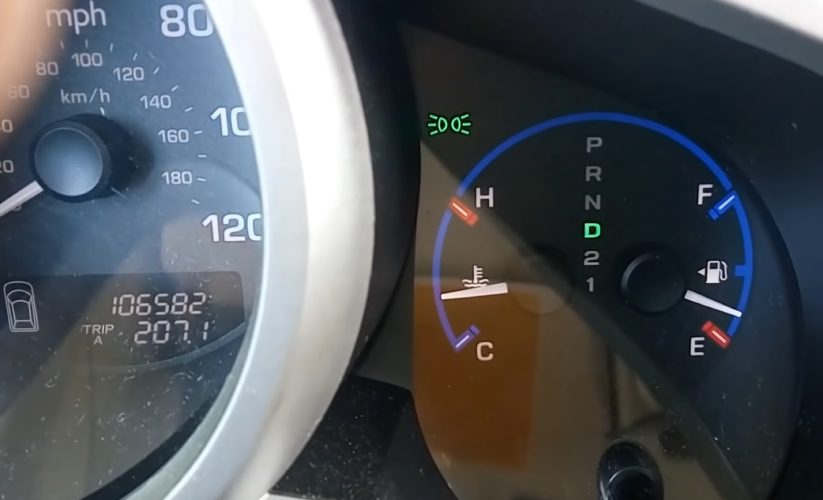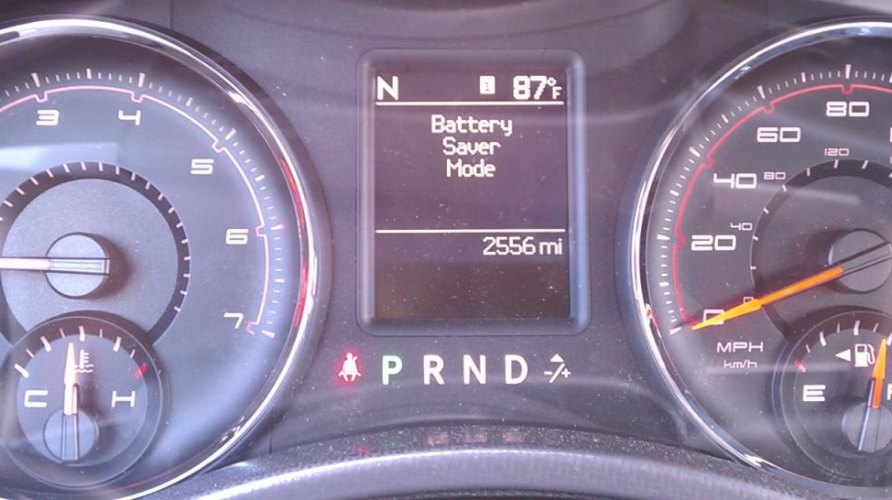Many statistics have helped demonstrate the prevalence of road traffic accidents around the globe and over the years. Data from the WHO projects that most accidents happen in middle and low-income countries, and it has also been found that the prevalence of road accidents has reduced over the years.
We can learn from this that strictly enforced traffic laws and safe cars contribute to the reduction of accidents. The role of safe vehicles cannot be overstated enough; nowadays, we have vehicles that are outfitted with various warning signals and fail-safes designed to keep the car intact and let the drivers know when to check for problems. Included amongst these fail-safes is the steering assist.
Here Is What Can Cause the Error Message
The most common cause of the “Steering Assist is reduced” warning is the failure of the Engine Control Module by providing false temperature readings of the coolant. By failing to read the coolant temperature accurately, the ECM will not be able to regulate its temperature. As a result, the grease from the steering rack will either become thicker or thinner, leading to this error message.
However, there are times when the culprit can be a stuck open thermostat, broken temperature gauge, or the engine cooling fan being stuck on high speed.
Here are the approximate costs for fixing the issue, but remember that prices will vary according to your location and car model.
| Issue | Cost |
| Replacing ECM | $1000 |
| Replacing thermostat | $300 |
| Fixing engine cooling fan | $100 |
| Fixing temperature gauge | $150 |

What Is Steering Assist?
Steering assist is a part of the power steering system of the car. Typically, this system comes in two parts; a hydraulic power steering system and a power steering assist system. Before the advent of this technology, the maneuverability of the car steering was impaired at best; the only way to control the car was to put all efforts behind the wheel’s movement.
This was not very efficient and there needed to be innovation that brought about improved maneuverability. The power steering technology came and provided that through a hydraulic pump to put pressure on the hydraulic fluid, which in turn eases the movement of the steering for smooth driving.
The hydraulic fluid does this by being pumped when the steering is moved and then by magnifying the pressure from the motion of the steering and transferring the energy to the car tires.
Probable causes
To fix these issues appropriately, it helps to be aware of the probable causes. While it is true that various things could contribute to this, the major reason has to do with the ECM and its liability to error and fault.
01. ECM and its liability to error and fault
The steering assist system is interconnected in ways to the ECM (Electric Control Module), which is like the brainbox of all electrical functions in the car. The ECM, having this role, is responsible for the evaluation and measurement of the coolant level and temperature.
It is also responsible for the adjustment of these as appropriate. This is a critical role because defects in the coolant could lead to issues in the car, the most obvious being the fluctuation of the car engine’s temperature.
When the coolant liquid temperature decreases, the fluid in the steering module gets hardened because of this drop in temperature. As one would expect, this would cause the steering wheel to be stiffer, providing the conditions for the steering wheel to assist in working.
The steering assist gets this message from the ECM, which relays it after it reads the temperature of the coolant. When the ECM provides inaccurate readings, this nulls the message to the steering assist and affects the capability of the steering module to provide accurate responses to the conditions on the ground.
This is when the error code becomes visible on the dashboard and signals to the driver that the steering assist is reduced so as not to respond to inaccurate conditions, which would upset the balance of the steering wheel.
To get further info on this, one can check out the service bulletin 17-NA-390.
02. The engine thermostat is stuck open
Engine thermostats are the part of the engine that regulates and gatekeep the flow of coolant fluid into the radiator. Through this, it helps to steady the temperature of the engine.
When the thermostat is stuck open, a lot of the fluid will rush through, keeping the engine at an unnecessarily cool temperature. It is expected that through this, the steering assist would malfunction, and the error code would come up.
03. The engine cooling fan is stuck on a high speed
This is another direct consequence of an engine that is too cold. When an engine fan is stuck at high speed, it rapidly cools the engine and makes the steering module grease stiffer. This is another cause of this error message.
04. Broken temperature gauge
The temperature gauge reads the temperature level of the car engine. When the gauge drops, it means that the car engine is cold. If the car has been running for a while and the gauge still reads cold, then it means that the gauge is most likely broken and cannot tell when the engine is cold. This spells bad luck for your steering wheel assist.
Against popular opinion, it is not true that a bad thermostat is linked to a malfunctioning AC in the car. However, a malfunctioning AC might cause the “steering assist is reduced” code to come on.
How Can You Identify What is Causing the Error?
The first step you should take when any warning message comes up on your dashboard is to stop the car for a couple of minutes and start it again. If there was a coolant temperature misreading by the ECM, you might be lucky and the message could go away.
If the message is still there, you can try and plug in a code reader to see what code errors you get. Delete the code errors and check to see if the message is still there.
If the warning persists, then it is time to have each of the parts mentioned above tested and see what is causing the issue.
To test an ECM, hook it up to a diagnostic scanner and run a diagnostic test. The results of the test will tell you if the ECM is functioning properly. If the ECM is not working properly, it will need to be repaired or replaced. If the ECM is not at fault, you may wish to test the thermostat next.
To test if your engine thermostat is stuck open, simply start the engine and let it idle for a few minutes. Then, feel the radiator hose. If it is cool to the touch, then the thermostat is most likely stuck open. You should have your thermostat replaced as soon as possible to avoid further engine damage. If the thermostat passes the test, you might want to check the engine cooling fan.
If your engine cooling fan is stuck at a high speed, you may need to test the engine fan relay. To do this, first, disconnect the battery. Next, locate the engine fan relay and remove it from the fuse box. Finally, test the relay by applying power to the terminals and ground to see if the fan turns on. If the fan does not turn on, the relay may be faulty and need to be replaced.
If everything seems to work fine, it is recommended to have a professional mechanic inspect the car.
How Much Does It Cost to Fix?
The cost of fixing the issue will vary depending on what is causing the problem. If the message goes away after restarting the car, you will have solved it for free. However, if you are still reading, it is most likely that the message has either reappeared or did not go away in the first place.
The cost of replacing a malfunctioning ECM will amount to around $1000 for parts and labor while replacing a stuck open thermostat will cost around $300.
Replacing a blower motor relay will be around $100 while fixing a faulty temperature gauge will cost $50 more.
All costs are estimates and assume that the work is being done by a mechanic. As always, doing the work yourself will save you quite a bit of money.
Conclusion
It is worth noting that the warning message coming on might not indicate any significant issue and might be a simple electrical one. To ensure this is not the case. The best thing to do is run diagnostics on the engine for problems. The diagnostic fee runs around $180.
On running diagnostics, you should be able to ascertain what exactly is wrong with the car. If the diagnostic errors do not eventually lapse, you would need to take your vehicle to a mechanic.
You could reset the fault code by simply restarting your car if the issue is minor. Restarting the car signals all electrical components and puts them in reset mode. If the issues are deeper, you must change your thermostat completely.
The cost for this goes around $250 to $300. It also helps to change the power steering fluid regularly. A reasonable mandate is to change it every four years or at least every 50000 miles. This costs only $120 in most places.
My name is Jeffrey Williams and I have been a car mechanic for over 35 years. I am currently working NYC Auto Repair Shop, in New York City and recently developed a strong passion about blogging. I decided to put together this blog where I will try and answer the most commonly asked questions I get on a daily basis from my customers.





